
June 2022
Issue 54
Fishing season is in full swing
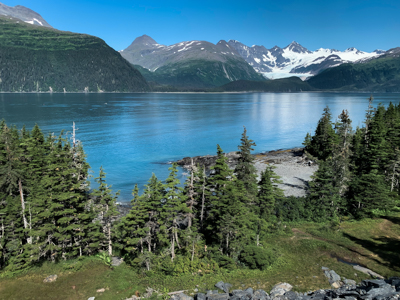 For many anglers across the state, getting out and enjoying a day on the water is at the top of their summer “to-do” list. And rightfully so. It’s the perfect time of year to get out and enjoy fishing with family or friends.
For many anglers across the state, getting out and enjoying a day on the water is at the top of their summer “to-do” list. And rightfully so. It’s the perfect time of year to get out and enjoy fishing with family or friends.
Have you purchased your 2022 sport fishing license yet? If not, be sure to do so before you head out on your next fishing adventure. Visit our online store to get started.
Are you following us on social media? If not, be sure to check us out on Instagram @wefishak. You can also follow us on Facebook at ADF&G - wefishak . Also, visit our YouTube channel for a growing selection of “how-to” videos and much more.
If you have a comment or story ideas for Reel Times, we encourage you to send them our way. You can send comments to ryan.ragan@alaska.gov.
We’ll see you on the water.
Ryan Ragan
Introducing the New ADF&G Mobile App
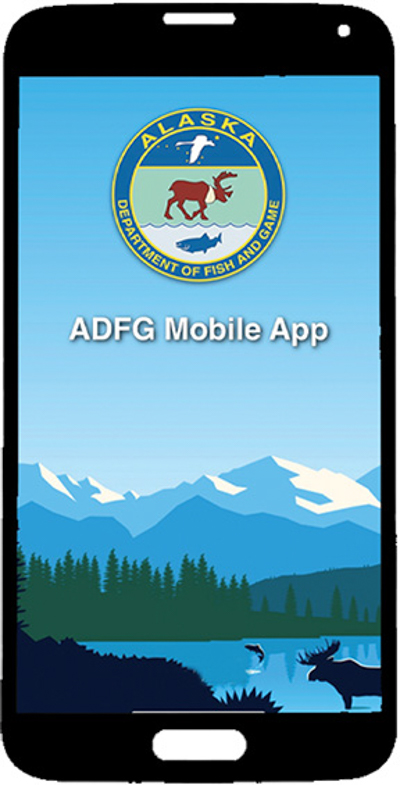 This free mobile app was developed for the people who hunt and fish in Alaska and is designed to enhance your pre-trip planning and in-field experience. The app provides access to the information and services you need to follow applicable hunting and fishing regulations. The mobile app will be available as a free download in the Android and Apple App stores and can be used on a smart device such as iPhone, Android phone, iPad, or Android tablet.
This free mobile app was developed for the people who hunt and fish in Alaska and is designed to enhance your pre-trip planning and in-field experience. The app provides access to the information and services you need to follow applicable hunting and fishing regulations. The mobile app will be available as a free download in the Android and Apple App stores and can be used on a smart device such as iPhone, Android phone, iPad, or Android tablet.
Visit our website to learn more and to download the new ADF&G mobile app to your phone.
Going deep in search of sablefish
By David Love
 Grilled over alder charcoal, slowly poached in white wine over low heat, glazed with miso and brown sugar and baked, blackened seasoning with fresh lemon wedges, and wet-brined then smoked. The delicate texture and buttery flavor of black cod, or sablefish, is a taste treat no matter how you prepare it.
Grilled over alder charcoal, slowly poached in white wine over low heat, glazed with miso and brown sugar and baked, blackened seasoning with fresh lemon wedges, and wet-brined then smoked. The delicate texture and buttery flavor of black cod, or sablefish, is a taste treat no matter how you prepare it.
Sablefish, Anoplopoma fimbria, are dark grey to black with a lighter gray underside. Unlike true cod, they have no barbel under their chin and two dorsal fins instead of three. They have been recorded to almost 45 inches in length and weights over 55 lbs, but more typically average about 28” and 9 lbs. Sablefish reach maturity at 5-7 years, spawning in deep water off the continental shelf break in winter and spring where the eggs develop and drift to the surface as larvae. As juveniles they remain nearshore until about age 2 before heading back to deeper water. Depending on life stage, their diet varies between krill, fish, squid, octopus and crustaceans. Maximum age has been estimated at 90+ years, with the majority of the catch being less than 20.
Sablefish are great migrators, moving an average of 120 miles annually. Juveniles may migrate more than twice that in a year. Distributed from Baja Mexico to the Bering Sea and southwest as far as the Commander Islands in Japan, sablefish are mostly found over soft-bottom habitats ranging from about 500 to 5000 feet in depth.
So how does one catch these deepwater denizens using sport gear? Here’s an example of one way: Purchase a large capacity electric reel, mount it on a stout rod, spool it with 2600’ of Dacron braid, melt lead ingots into 5 lb weights, tie on two circle hooks baited with octopus or pink salmon strips, and drop the whole works over the side in 1500’ feet of water. Then wait for 20 minutes for the lead to free spool to the bottom, reel up about a foot and wait. Usually not long. Once the rod tip is bouncing excitedly, indicating a fish has taken the bait, reel it up. Hopefully, your boat battery is not dead, so that the electric reel does that for you.
Once onboard, begin the discussions about how best to prepare your catch. Something else to contemplate: each 33’ of depth is equivalent to 1 atmosphere, so how do these fish live at over 150X surface atmospheric pressure? Food for thought, while thinking about how best to feed…Yum!
Arctic Char: A unique and often overlooked fishery
By Tim Adickes
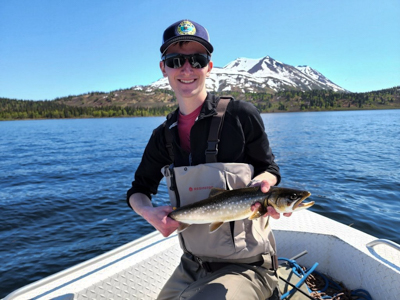 As summer kicks off in Bristol Bay, everyone focuses on preparing for and pursuing salmon as they make their way back into the area’s plethora of watersheds. While the world class salmon runs in the area are certainly worthy of the attention, the bay also has a diverse array of resident species that shouldn’t be forgotten. Arctic char (Salvelinus alpinus) is one such species that can get lost in the summer salmon shuffle. They are present in most of Bristol Bay’s major watersheds but have somewhat sparse distribution in the rest of the state, making the bay one of best places to come for those anglers hoping to hook one of these beauties.
As summer kicks off in Bristol Bay, everyone focuses on preparing for and pursuing salmon as they make their way back into the area’s plethora of watersheds. While the world class salmon runs in the area are certainly worthy of the attention, the bay also has a diverse array of resident species that shouldn’t be forgotten. Arctic char (Salvelinus alpinus) is one such species that can get lost in the summer salmon shuffle. They are present in most of Bristol Bay’s major watersheds but have somewhat sparse distribution in the rest of the state, making the bay one of best places to come for those anglers hoping to hook one of these beauties.
Over the winter Arctic char spend their time deeper in the lakes. As summer begins to kick off in mid-May Arctic char congregate at the major lake inlets waiting for the annual salmon smolt outmigration. Bristol Bay is home to the world’s largest sockeye salmon run in addition to substantial runs of the other four pacific salmon species. As a result, there is a massive salmon smolt outmigration starting shortly after ice out in May. Char gather at lake inlets to gorge themselves, transitioning from their snaky late spring body type to their full weight in a matter of weeks. This feeding frenzy often continues into July when the smolt outmigration tapers off and Arctic char begin to disperse. Next in mind for the now full and happy char is the fall salmon spawning season. Arctic char will congregate at lake inlets again after salmon spawn to feed on stray salmon eggs, as well as flesh from decaying salmon carcasses. They will then relocate to various spawning locations in the lakes to prepare for their own reproduction in the late fall. Due to the abundance of food resources available to Bristol Bay char they tend to be large with anglers commonly catching 20+ inch fish.
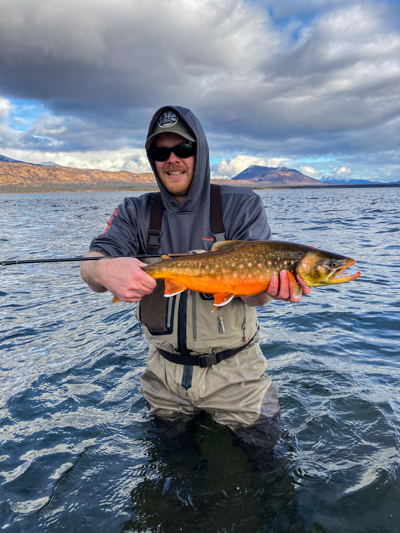 A variety of methods are available when targeting Arctic char at lake inlets. During the smolt outmigration at larger rivers, a good bet is motoring into the mouth of the river and drifting back out into the lake, passing over the drop off while jigging. Casting off the drop off of smaller steams can also produce fish. Spinners, spoons, egg imitations, flies and jigs can all bring in a good catch. Char are aggressive and make for a fun angling experience.
A variety of methods are available when targeting Arctic char at lake inlets. During the smolt outmigration at larger rivers, a good bet is motoring into the mouth of the river and drifting back out into the lake, passing over the drop off while jigging. Casting off the drop off of smaller steams can also produce fish. Spinners, spoons, egg imitations, flies and jigs can all bring in a good catch. Char are aggressive and make for a fun angling experience.
Before hitting the water to pursue the often-underappreciated Arctic char, it’s a good idea to check the specific regulations for where you are planning to fish. In Bristol Bay, there is a bay wide combined limit of three per day and in possession for Arctic char and Dolly Varden from June 8 through October 31. From November 1 through June 7 the bay wide limit is 10 per day and 10 in possession. However, specific sites such as the Agulowak, Agulukpak, Iliamna, and other rivers have their own specific regulations in addition to the bay wide regs. So be sure to double check the specific regs for where you intend to fish.
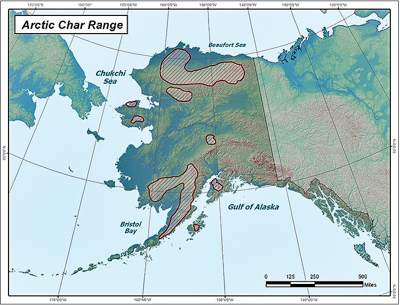 While the main focus of the summer season tends to be salmon, the sometimes overlooked Arctic char provides great opportunities for a whole range of experiences. Whether you’re committed to fishing till you drop, looking to enjoy a day running around on the boat with a little fishing to top it off, or even just get a little more fishing in after filling the limits for other species, char fishing will likely turn into one of your favorite summer activities. Depending on how discerning your palette is they can also be good eating. If that isn’t really your thing, they make for some great pictures too. Regardless of the way you chose to get out and seek them, Arctic char are ready and now is the time to get out there!
While the main focus of the summer season tends to be salmon, the sometimes overlooked Arctic char provides great opportunities for a whole range of experiences. Whether you’re committed to fishing till you drop, looking to enjoy a day running around on the boat with a little fishing to top it off, or even just get a little more fishing in after filling the limits for other species, char fishing will likely turn into one of your favorite summer activities. Depending on how discerning your palette is they can also be good eating. If that isn’t really your thing, they make for some great pictures too. Regardless of the way you chose to get out and seek them, Arctic char are ready and now is the time to get out there!
Fishing the famed Kanektok River
 The Kanektok River is a popular float or guided sport fishery in western Alaska, well known near and far for its spectacular rainbow trout fishery. Often called the “Chosen” River by guides and clients for the uniquely patterned “leopard” rainbow trout, it is well advertised and appreciated by the local guide services and outfitters, as well as by the many satisfied clients.
The Kanektok River is a popular float or guided sport fishery in western Alaska, well known near and far for its spectacular rainbow trout fishery. Often called the “Chosen” River by guides and clients for the uniquely patterned “leopard” rainbow trout, it is well advertised and appreciated by the local guide services and outfitters, as well as by the many satisfied clients.
The Kanektok River flows west from Kagati Lake in the Eek Mountains to the Kuskokwim Bay at the village of Quinhagak. The river flows within the boundaries of the Togiak National Wildlife Refuge and the upper portion is within the Togiak Refuge Wilderness area. The upper river is small and clear, and has excellent fishing for rainbow trout, Dolly Varden, and Arctic grayling. During early and mid-summer, there is also fishing for king salmon and sockeye salmon, and in late summer and fall, fishing for coho salmon. The entire area is wilderness and contains no development. Bears are abundant, and anglers should act appropriately. Access is normally by floating from Kagati Lake at the head of the Kanektok River to Quinhagak’s old airport, which is about 90 miles, and the float is likely to take a week or more. Once at the old airport, which is on the river, there is a local service that will take you to the new airport (a distance of 5 miles) for a fee.
Floaters should be aware of an ADF&G floating weir at 59° 46.212`N, 161° 04.010`W. The weir can be floated over by rafts, and sections suitable for passing over should be indicated with flags. The weir is made of plastic, so please avoid standing on it, and fishing is prohibitied within 300 feet of the weir.
Getting There
The Kanektok River is typically accessed by float plane to Kagati Lake. The float to Quinhagak takes a week or more. There are air taxi and outfitting services available in both Dillingham and Bethel that can provide transportation and rental of rafts and other gear. There is scheduled air service out of Quinhagak, and transportation from the public access at the old airport to the new airport must be arranged in advance. The river is all Class I, but there are a number of sweepers which require some boating skill, and there can be log jams that require a portage of some distance. There is also lots of good information on the Togiak National Wildlife Refuge Plan Your Visit webpage.
Tackle
Fishing with egg patterns can be productive, particularly during salmon spawning. Silver and flashy streamers work well, and sometimes dry flies are the tackle of choice. Rainbows are also known for hitting mouse patterns fished on the surface. Anglers using spinning gear will have good luck with a variety of spinners, spoons, and jigs, particularly flashy orange and pink or light colored ones.
Species
Dates
Begins June 1st and ends September 15th.
Regulations
Before you go fishing, please Check out the regulations.
Tips and techniques to catch sockeye salmon
 New to fishing for sockeye salmon? Check out this “Sockeye Salmon Fishing 101” video for some tips and techniques.
New to fishing for sockeye salmon? Check out this “Sockeye Salmon Fishing 101” video for some tips and techniques.
You can also check out this great video entitled “How to Fish for Klutina River Red Salmon.”
Good luck!
Field to Plate - Recipe of the month
Recipe of the Month – Braised Alaska Sablefish with Ginger & Scallion and Deep-Fried Coconut Salmon
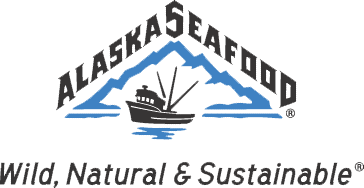 Try this great recipe for Braised Alaska Sablefish with Ginger & Scallion from the Alaska Seafood Marketing Institute.
Try this great recipe for Braised Alaska Sablefish with Ginger & Scallion from the Alaska Seafood Marketing Institute.
Or, try this great recipe for Deep-Fried Coconut Salmon from the Alaska Department of Fish and Game.
Enjoy!
If you have any questions about the Reel Times newsletter, please contact Ryan Ragan at ryan.ragan@alaska.gov
